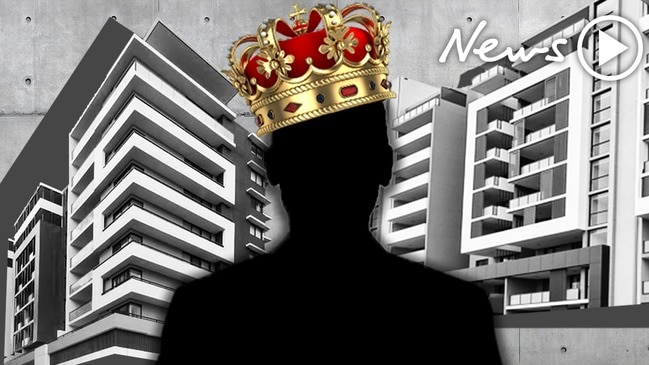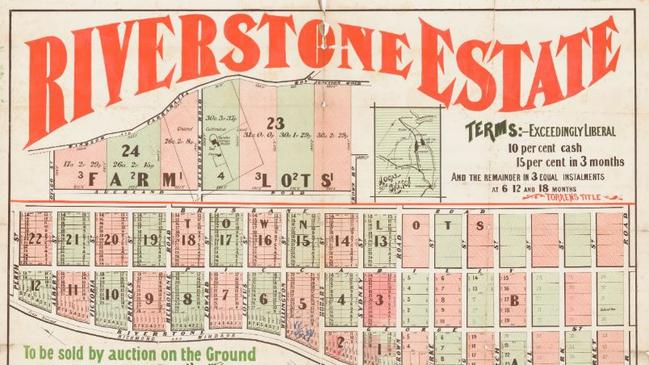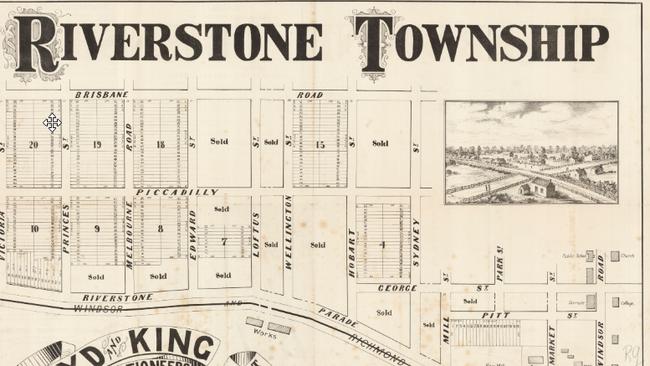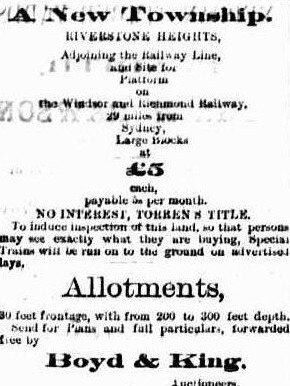Riverstone is the Sydney suburb frozen in time for 130 years
Plans drawn up 130 years ago to transform Riverstone from farming paddocks to Paddington-style terraces are finally coming to life, with residents staking a claim to building lots. Among them is 22-year-old Chandini Suresh. SEE THE PLANS

NSW
Don't miss out on the headlines from NSW. Followed categories will be added to My News.
It’s a suburb lost in time that has taken 130 years to become a neighbourhood.
When this estate map of Riverstone was first drawn up, horse and cart was the main transport, 540sq m lots were three pounds each (about $400 in today’s money) and, in some cases, came free with the purchase of a suit from department store Gowings.
Even though Sydney’s northwest was a very long way from the city in the 1880s, many buyers wanted to be close to the old Riverstone Meatworks, which by the turn of the 20th century was the biggest of its kind in the colony.
But this chunk of land, the northeastern tip of Riverstone, was never developed. Even as much of the city’s northwest filled up, it remained an island of paddocks in a sea of houses.
A combination of fragmented ownership, lack of essential infrastructure (water, sewerage, roads and electricity) and government oversight meant it has stayed undeveloped for 130 years. Until now.

So instead of the first resident being a meat worker with six kids born in 1860, it will be a 22-year-old female finance worker who paid $390,000 for a 302sq m block. And she didn’t get a free suit.
MORE FROM BEN PIKE
Opal tower engineers blame builders for cracks
Four-year deadlock over seawalls heads to court
“Property is very up and down so I am not surprised it has taken a while — but I didn’t think it would be this long,” Chandini Suresh said of the site’s history.
“I’d love to make this place my home one day, with a single storey house, two kids and a dog.

“There is a lot happening in the area with schools and hospitals and I’ve got a lot of friends nearby.”
The 4ha estate in Sydney’s northwest will be the first neighbourhood to be delivered under new laws passed in 2015 allowing the government to “unlock” land that previously remained undeveloped.
This land was originally divided up under old “paper subvision” system, where lots were drawn up but never delivered.
Planners at the time thought Western Sydney would look like Paddington or Balmain terrace neighbourhoods, with long skinny blocks (9m frontages) rather than the 12m frontages of today.

Government agency Landcom has been working with 51 landowners over the past 20 years to agree on terms so essential infrastructure (and then housing) could be delivered.
Owners then get up to 80 per cent of their land’s sale value back when the project is delivered. But it has not been easy.
“Because families have held the land for so long, many have expectations that they are going to be instant millionaires,” Landcom CEO John Brogden said.
“And while many people have made good money out of this, they may not have made as much as they expected.”


Mr Brogden said feuding siblings, messy divorces and forgetful landowners have complicated matters further.
“Some of these people also disappeared into the ether,” Mr Brogden said.
“Someone has owned this land for 100 years and you can’t actually work out where they are.
“We had one guy who we couldn’t track down for almost one year. And then when we were going to forcibly acquire the land that’s when he turned up.”
Riverstone is the first paper subvision done under new laws that give the government the power to — if land owners won’t join in the scheme — acquire land to build suburbs.
There were no forced acquisitions in the Riverstone scheme.

There are 22,000 paper subdivisions in NSW, in places like Marsden Park, Vineyard and Lake Macquarie.
Mr Brogden said with this scheme being a success, they will be able to unlock other areas that have previously been off limits because of fragmented ownership and a lack of infrastructure.
Originally published as Riverstone is the Sydney suburb frozen in time for 130 years
